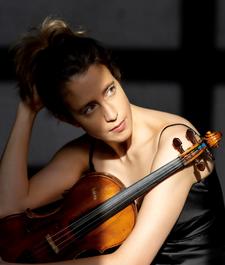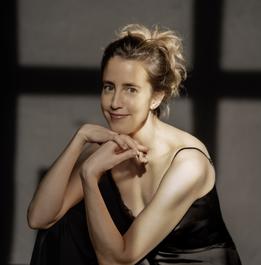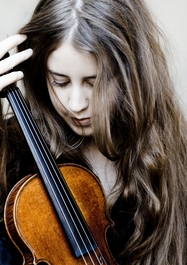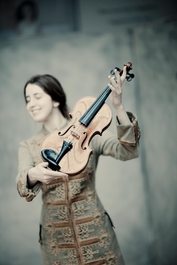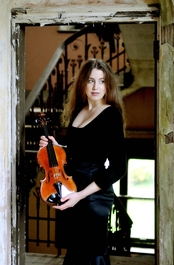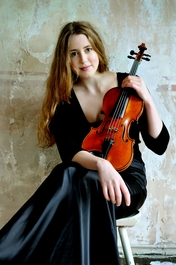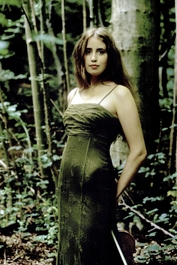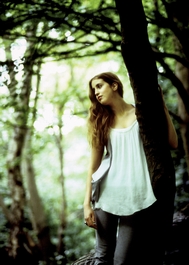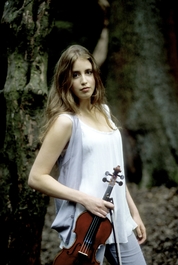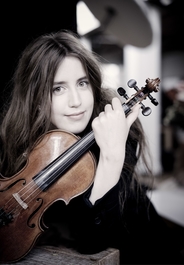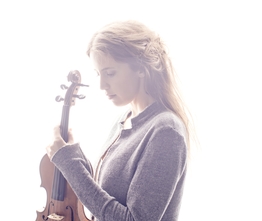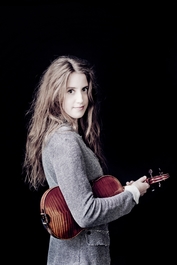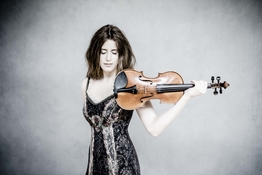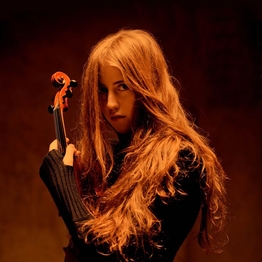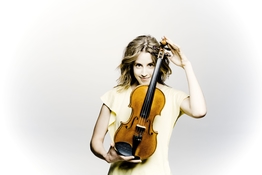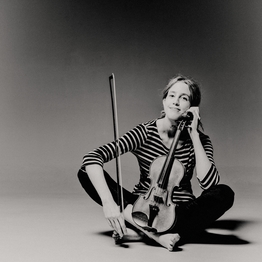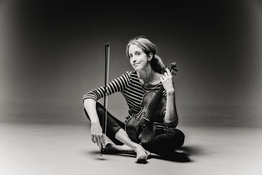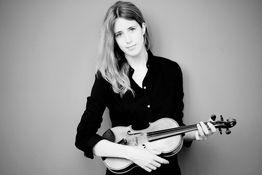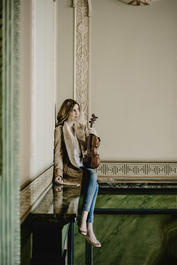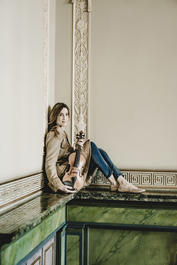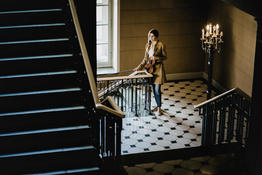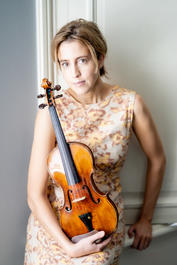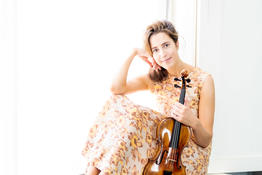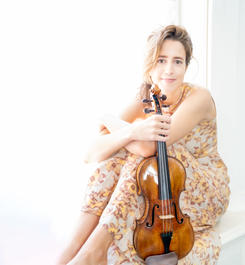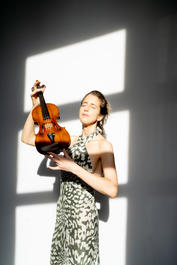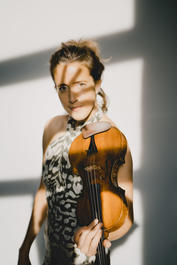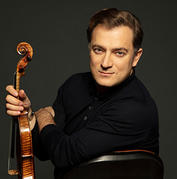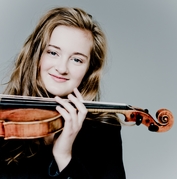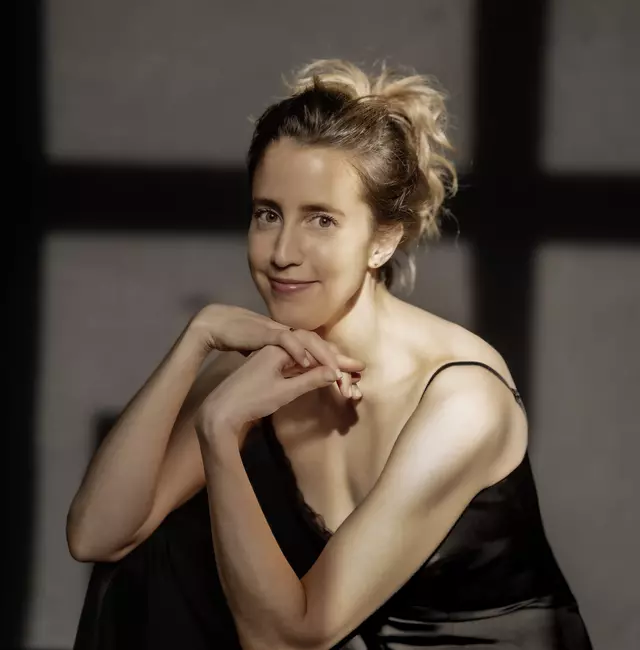

Vilde Frang
News
Beethoven Songs and Folksongs
At the heart of this programme of Beethoven songs performed by Ian Bostridge and Sir Antonio Pappano is the song cycle An die ferne Geliebte (To the distant beloved). It dates from 1816, the year that saw the publication of Beethoven’s 7th Symphony. Setting six poems by Alois Jeitteles, it is generally acknowledged to be the first example of a song cycle, a genre that became important in the 19th and 20th centuries. Beethoven creates a coherent whole, linking songs together with brief piano interludes and closing the circle by recalling material from the opening song in the final song.
“Somehow the most concentrated 13 or 14 minutes of music that Beethoven ever wrote,” is how Antonio Pappano describes An die ferne Geliebte. For Ian Bostridge, the cycle is an expression of Beethoven the romantic rather than the striving, heroic Beethoven we often perceive in the symphonies and concertos. “It’s a distillation of Beethoven as lover, but his beloved is far away and he can never reach her. The sadness of that is so poignant.” (Beethoven was notoriously unlucky in love.) It is through the manifestations of nature – and through his songs – that the lover in An die ferne Geliebte senses a connection with his beloved. Bostridge draws an analogy with the composer: “Beethoven puts his feelings into music on a piece of paper and sends it out to the world. It is rather like the dedication he made on the score of the Missa Solemnis.” After he had written that epic choral work, which came a few years after An die ferne Geliebte, Beethoven inscribed the score with the words: “Vom Herzen, möge es wieder, zu Herzen gehen!” – “From the heart: may it go in turn to the heart.”
Among the other songs on the album, the best known is the rapturously lyrical ‘Adelaide’, which dates from the mid-1790s. In a very different vein is a song to an Italian text, ‘In questa tomba oscura’ (1806-7), in which a dead man admonishes his faithless lover: “The textures of the piano reflect the darkness and bitterness of the text,” says Antonio Pappano. He also feels that Beethoven had an influence on the Italian opera: “I don’t think Donizetti, Bellini and Rossini would have been possible without Beethoven.”
Bostridge and Pappano are joined by violinist Vilde Frang and cellist Nicolas Altstaedt for eight of Beethoven’s charming settings (in English) of folksongs from the British Isles. Between 1809 and 1823, the composer arranged more than 160 song melodies at the request of his publisher in Edinburgh, George Thomson. “These arrangements were essentially commercial ventures,” explains Bostridge, “but Beethoven put some amazing music for piano trio into them.” Pappano concurs: “They’re real drawing-room music because they are for piano, voice, violin and cello. When we all play together, it’s like a family making music at home.”
Vilde Frang sheds new light on Schubert’s demands for virtuosity and on Paganini’s sensitive musicality
Vilde Frang, partnered by pianist Michail Lifits, has assembled a programme that juxtaposes music by two violinist-composers of the early 19th century, Franz Schubert and Niccolò Paganini. While they lived vastly different lives and inhabited diverse aesthetic worlds, there are links to be found between them.
Through the juxtaposition, Frang wants to highlight Schubert’s capacity for virtuosity and Paganini’s musicality and sensitivity. “It’s the contrasts that appeal to me,” she says. For her, the key connection between Schubert and Paganini is the inspiration they both found in the human voice. The album includes variations that Paganini wrote on themes from operas by Rossini (Tancredi) and Paisiello (La molinara), and the ‘grand caprice’ that the violinist Heinrich Wilhelm Ernst – considered Paganini’s greatest successor – based on one of Schubert’s most thrilling songs, Erlkönig. It sets a poem by Goethe that tells of a frantic night-time horse-ride by a father and his young son, who is tempted by a wicked spirit, the Erlking. When they reach their destination, the child is dead. “This Erlkönig is a gift to the violinist. There is such precision and accuracy in Ernst’s transcription – it works so well that it sounds like it was written for the violin. And then there is the challenge of characterising the galloping horse, the father, the son and the Erlkönig himself.”
Paganini, born in 1782, achieved enormous success as a virtuoso performer. He lived until 1840, 12 years after Schubert’s death at the age of just 31. “There is an extreme contrast between Paganini, who became a living legend, and Schubert, who tragically did not achieve the fame he deserved,” says Frang. In Spring 1828, just months before his death, Schubert saw Paganini give a concert in Vienna, where the violinist was causing a sensation. He bought tickets for himself and two friends – probably with money that he had earned from a successful concert given in his benefit on 26th March. Unfortunately, Schubert’s concert received little coverage in the Viennese press, perhaps because Paganini was stealing the musical limelight at the time. After Schubert heard Paganini play in Vienna in Spring 1828, he wrote “I have heard an angel sing.”
Frang cites Paganini’s influence on Schubert in such works as the Rondeau brilliant in B minor, D 895, and the Fantaisie in C major, D 943, both of which were probably composed for the young violinist Josef Slavík. When Frédéric Chopin heard him play, he wrote: “He played like a second Paganini, but a Paganini rejuvenated, one who with time will surpass the first ... He makes the listener speechless and brings tears to one's eyes.” Sadly, Josef Slavík died in 1833 at the age of just 27.
“There is a lot of virtuosity to be found in Schubert’s music for violin, but it is also very finely and delicately made,” says Vilde Frang. “He can be five years old in one phrase and 75 years old in the next, or both ages in the same phrase. When you play his music, it can feel like walking on eggshells. Rather than trying to make the music happen, you have to let it happen.
“As for Paganini, he could be a very lyrical composer too. After all, he cherished the art of the song, and composers like Brahms, Rachmaninov, Liszt and Lutosławski all found inspiration in his work. I’d like to associate him with sincerity, purity and a sense of nobility. There’s an almost religious purity in some of his Caprices, and his Cantabile, which I play on this album, is a bit of a sacred moment: it’s rather like a prayer.”
Q&A with Vilde Frang
What inspired you to put together this programme of works from different genres?
First and foremost, Enescu’s Octet for strings and Bartók’s first violin concerto are firm favourites in my repertoire. While the concerto is a piece with strong chamber music qualities, the Octet demands a soloistic attitude from every participant. I perform both quite frequently and I am excited to bring them together on a recording.
They both date from the early 20th century and were written when the composers were very young - Bartok was in his early twenties and Enescu in his late teens. The concerto was dedicated to a violin prodigy, while the Octet was composed by a violin prodigy. And each work was dismissed and neglected for decades.
How would you define the special characteristics of Bartók and Enescu?
The two composers have a lot in common … They were born in same year, and – as the map of Europe was drawn then – in the same country.
Enescu came from the Carpathian region in Romanian Moldavia, a European crossroads and a melting pot of cultures, traditions and influences – Arab, Ottoman, Mongolian, Greek, Tatar and Slavic. Bartók, born in Transylvania in Hungarian Romania, collected and popularized thousands of folk songs of Hungarian, Romanian, Slovak, Bulgarian, Balkan and Turkish origin.
Bartok and Enescu had a mutual admiration and performed together in recital several times. They both also lived and died in self-imposed exile – Bartók in America, Enescu in France – but they remain two of the 20th century’s greatest nationalist composers, and major contributors to their countries’ culture and art.
To what degree does nationalism characterise this music?
The Enescu Octet is the better example of nationalism: one notices the influences of Romanian liturgical music – which is broadly similar to that of the Russian Church, but with greater Byzantine and Greek influences – and Romanian folk music, which is a composite of Arabic, Slavic and Hungarian elements. Enescu described the essence of Romanian folk music as “dreaming ... with the special character of sadness in the midst of happiness, and a tendency towards melancholy, towards minor keys.”
The Bartók violin concerto, on the other hand, is unique in revealing the tender, loving side of the young composer, something one might not normally associate with him. It was, in Bartók’s words, ‘a confession” and a portrait of the prodigious violinist Stefi Geyer, with whom he was romantically involved. He dedicated the concerto to her with a poem, containing the line “No stars are as far apart as two human souls.” Geyer did not reciprocate Bartók’s feelings and she never performed the concerto. It was only published in 1956, a year after Enescu’s death and over a decade after Bartók himself had died.
What special importance does Enescu hold for violinists?
Enescu regarded himself a composer first and foremost and considered it a kind of curse to be regarded as a violin virtuoso. He studied composition with Fauré and Massenet, with Boulanger and Ravel as classmates. He was a fine cellist – allegedly able to give ‘a first-rate account of Lalo cello concerto’, although he would only play the cello publicly in a string quartet, not as a soloist. Pablo Casals proclaimed him “the greatest musical phenomenon since Mozart.” As a conductor, he was even considered for the position as Toscanini’s successor at the New York Philharmonic. He had a voice that once enabled him to substitute for a bass singer in rehearsals while conducting the third act of Wagner’s Siegfried, singing the role of Wotan from his podium. In addition, he had an extraordinary memory – he could sit down at the piano and play from any point in a Beethoven symphony, Wagner’s Ring Cycle or Stravinsky’s Rite of Spring. Alfred Cortot claimed that Enescu was a better pianist than he himself was.
Enescu’s versatility makes him a titan among violinists in my view … and on top of that comes my pride at sharing a birthday with him! His playing was aristocratic, full of purity and nobility, yet there was also an edge of temperament, even wildness that adds a unique allure to his playing. He was taught to play by roaming lăutaris, gypsy musicians, in his home village in rural Romania, and that would forever characterise his playing. Yehudi Menuhin, who studied with Enescu, said that: “For me, Enescu will remain one of the true wonders of the world. His strong roots and his noble spirit come from his own country, a country with no match in beauty.”
What place does chamber music hold in your life?
Chamber music is like a vitamin injection to me. It creates a healthy balance to include festivals and chamber music projects on a regular basis. My choice of ‘desert island’ music would definitely be a chamber work of some kind – and if I had to choose one single piece to play on a desert island, I would probably bring along Enescu’s Octet.
Enescu started working on it aged only 17, one year older than Mendelssohn was when writing his famous octet, but it took him a year-and-a-half of painstaking work to complete it. As he later recalled: “No engineer launching his first suspension bridge across a river can have agonised more than I did as I gradually filled my manuscript paper with notes!” When he completed the work in 1900, the prestigious concert promoter Edouard Colonne agreed to programme the piece but unfortunately, the players were not up to the task and the piece ended up being judged “too incomprehensibly modernistic”. Much to Enescu’s bitter regret the premiere was cancelled after five rehearsals! The premiere finally took place nearly a decade later, in 1909, with the composer conducting.
It is symphonically-conceived, fantastique work – “as one would imagine chamber music by Berlioz”, according to Enescu. It offers equal challenges to all the musicians involved, both as soloists and as ensemble-players, which makes it such an adventure and so rewarding to perform. It meant the world to me to gather together some truly great and very dear colleagues of mine for this recording.
Warner Classics wins Label of the Year at the 2016 Gramophone Awards
We are proud to announce that Warner Classics has been crowned Label of the Year at the prestigious Gramophone Awards in London. Now in its 39th edition, the Gramophone Awards are known as the ‘Oscars of classical music’. Warner Classics and its sister label Erato were also recipient of three category wins this year including the Opera , Recital, Concerto Awards. The Lifetime Achievement Award went to the legendary German singer Christa Ludwig, the favourite mezzo-soprano of Karajan, Böhm and Bernstein, for a career spanning over 45 years.
Label of the Year winner, Warner Classics, was represented by the label’s President, Alain Lanceron and Head of Classics UK, Patrick Lemanski, who collected the trophy from Gramophone’s Editor Martin Cullingford. In their citation, James Jolly and Martin Cullingford said: “Nurturing new artists, showing complete belief in them and giving them the devoted commitment they need to become tomorrow’s greats; honouring recording’s heritage with beautiful presentation and bringing it alive for a new generation; and continuing that golden tradition in our own day, with a no-expense-spared studio opera drawing on the talents of today’s leading artists: these are three facets of Warner Classics that come together to make them a worthy winner of our 2016 Label of the Year Award.”
Alain Lanceron accepted the award and commented: “Who would have thought in 2012, when the catalogues of EMI and Virgin were sold to Warner in an unstable climate, that four years later the label Warner Classics would receive the prestigious and coveted accolade of Gramophone Label of the Year? It is the proof that the guiding principles that led us to revive this label, with important new signings alongside deep catalogue exploitation, has borne fruit and that Warner Classics today holds a place in the hearts of classical music lovers all over the world. Thank you to Gramophone for this recognition and to all our artists and the Warner Classics team who make the label what it is today."
Patrick Lemanski, Head of Warner Classics UK, added: “I am absolutely delighted to celebrate together with all my UK Warner Classics team, the prestigious Label of the Year Award from Gramophone. It has been a fantastic year, ranging from ambitious frontline projects such as Pappano’s Aida to the magnificent legacy boxes honouring the talent of music icons like Yehudi Menuhin or Itzhak Perlman. I’m really pleased and proud to see all these efforts recognised and acknowledged by the fair judges at Gramophone magazine.”
Other big winners on the night included Sir Antonio Pappano for his studio recording of Verdi’s Aida (“Grand Opera doesn’t get grander than this,” opined the Gramophone critics). The Music Director of the Orchestra dell'Accademia Nazionale di Santa Cecilia accepted the award on stage: “I want to thank Stephen Johns (producer) and Jonathan Allen (engineer), and the vision of Alain Lanceron and his Warner Classics team. Thank you Alain for your continued believe in me and our Santa Cecilia Orchestra and in the power of Giuseppe Verdi who will always knock us dead, every time!”
Concerto category winner Vilde Frang played Tárrega’s Recuerdos de la Alhambra live in front of a captivated audience before accepting her award for the critically acclaimed Korngold and Britten album on Warner Classics (Frankfurt Radio Orchestra, James Gaffigan).
Conductor Raphaël Pichon accepted the Recital Award on behalf of his wife and artistic collaborator, French soprano Sabine Devieilhe, for their Mozart & the Weber Sisters album on Erato.
For the first time, the Gramophone Awards ceremony was streamed live by medici.tv, with parallel streams on classicfm.com and gramophone.co.uk. A celebratory Awards CD featuring full tracks from each of the winning recordings is available at Amazon.co.uk.
Gramophone Awards: Antonio Pappano, Vilde Frang & Sabine Devieilhe among winners
The winners of the 2016 Gramophone Classical Music Awards have been revealed, with Warner Classics and Erato recordings claiming prizes in three of the twelve categories.
The coveted Best Opera award this year goes to Warner Classics' widely acclaimed studio recording of Verdi's Aïda conducted in Rome by Sir Antonio Pappano, with an all-star cast (Anja Harteros, Jonas Kaufmann, Ludovic Tézier, Erwin Schrott, Ekaterina Semenchuk) and the Orchestra e Coro dell'Accademia di Santa Cecilia.
Gramophone praised the "orchestral playing of rare accomplishment from an Italian ensemble which is alive to the opera’s every word," while hailing soprano Anja Harteros "the most interesting Aida on record since Callas."
Norwegian star violinist Vilde Frang was up against stiff competition including Janine Jansen, Daniil Trifonov and Maria João Pires but came out on top for the Best Concerto Recording with her deeply personal, intense readings of Britten and Korngold Violin Concertos. The Gramophone critics were captivated by this "exciting player" and her "urgently communicative, potentially transformative accounts" of these two twentieth-century masterpieces.
"Playing with almost intimidating dexterity and polish, not to mention impeccable intonation (it comes as no surprise to discover that Anne-Sophie Mutter was an early mentor), her music-making still manages to project an impression of honesty and naturalness."
Young French soprano Sabine Devieilhe's star has well and truly risen with her second album for Erato, The Weber Sisters, which wins Best Recital exploring the arias Mozart wrote for three opera-singer sisters - his first love, his wife, and the first Queen of the Night. Devieilhe portrays these three 'characters' with effortless grace and thrilling highs.
"The programme centres around three magnificent showpiece arias for Aloysia, famed both for her expressive cantabile and her coloratura prowess," explained the Gramophone critic. "Among her specialities were sustained pianissimo high notes; and I can’t imagine they were more delicately floated than they are by Sabine Devieilhe, a lyric coloratura who combines a pure, sweet timbre and dazzling virtuosity."
Both Vilde Frang and Sir Antonio Pappano are in the running for the Artist of the Year award, which will be announced - along with the winners of Recording of the Year, Young Artist of the Year, Lifetime Achievement and Label of the Year - during the awards ceremony at London's St John's Smith Square on September 15 (streamed live by medici.tv).
The 2016 Gramophone Awards shortlist has been revealed
The prestigious Gramophone Awards shortlist has been announced, showcasing the finest classical recordings over the past year, as chosen by the leading classical music magazine's critics and specialists.
Seventy-two recordings have been shortlisted across twelve categories. The top three recordings in each category will be revealed in next issue of the magazine, which goes on sale on August 12.
There are particularly strong contenders in the Vocal categories, with French soprano Sabine Devieilhe - noted by Gramophone for her "pure, sweet timbre and dazzling virtuosity" - up against the likes of Jonas Kaufmann and Max Emanuel Cencic for her multi-award-winning Mozart album The Weber Sisters (Recital category).
Fresh from singing David Bowie at the BBC Proms in London, French countertenor Philippe Jaroussky is in the running for another prize, this time as one of the cast-members in Il Pomo d'Oro's magnificent triple-album recording of the Handel opera Partenope, welcomed by Gramophone as “a landmark event”.
Joyce DiDonato is a strong candidate for the Solo Vocal category for her live double album from Wigmore Hall Joyce & Tony, with her esteemed recital partner Sir Antonio Pappano at the piano in everything from Italian arias to the Great American Songbook.
In Opera, Pappano's Verdi Aïda, the all-star triple album studio recording from Rome, is a clear frontrunner, with tenor Jonas Kaufmann as Rademes - he is nominated again in the same category for his Pagliacci. Gramophone declared soprano Anja Harteros "the most interesting Aïda on record since Callas"; both she and maestro Pappano have been nominated for the public-voted Artist of the Year.
Among the Instrumental selections, Bertrand Chamayou does his countryman Ravel proud in the complete works for solo piano on a double album.
The Concerto category sees young Norwegian violin virtuoso Vilde Frang holding her own alongside the likes of Janine Jansen, with the recent Gramophone Recording of the Month, her "urgently communicative" Britten and Korngold Violin Concertos.
The Chamber category sees two Erato string quartets nominated for two sublime releases: the French Quatuor Ebène for their Schubertalbum featuring baritone Matthias Goerne and cellist Gautier Capuçon, and the German Artemis Quartet's searing Brahms, their last recording with the late, lamented violist Friedemann Weigle, which cellist Eckart Runge sees as "imbued with a sense of warmth, immediacy, friendship and love that is interwoven with a more spiritual, timeless beauty”.
See the full shortlist of the 2016 Gramophone Award nominees here.
Twelve major prizes for Warner Classics artists in the ECHO Klassik Awards
It’s the second year in a row that Warner Classics and Erato have taken the lion’s share in the ECHO Klassik Awards, the prestigious German classical music prizes revealed today. Artists from the two labels claimed a total of twelve accolades for excellence in classical recording and performance, including one for the Warner Classics-distributed Euroarts DVD label.
Philippe Jaroussky has been crowned Singer of the Year for the second time (his 5th ECHO Klassik) – the only countertenor ever named in this category to date. He receives the prize for his album Green, a journey through French chanson settings of poetry by Paul Verlaine.
From the Francophile flair of his last recital album, Jaroussky chose to sing in German for the first time for his highly-anticipated recording of Bach and Telemann cantatas with Freiburg Baroque Orchestra, to be released in October. And as this year’s artist in residence at the Norddeutscher Rundfunk in Hamburg, set to sing at the opening night of Hamburg’s new concert hall Elbphilharmonie, he has developed stronger connections to German musical life than ever before.
Conductor of the Year goes to Antonio Pappano for his monumental studio recording of Aïda. The Italian-British maestro recorded Verdi’s masterpiece with an all-star cast (including Anja Harteros and Jonas Kaufmann) in Rome and received international critical acclaim, including the BBC Music Award for Album of the Year and a Diapason d’Or.
Diana Damrau is the second Erato singer who picks up a prize this year, for her tour-de-force Violetta in the Paris Opera production of Traviata released on DVD (Music DVD Production of the Year: Opera).
Young French cellist Edgar Moreau receives the ECHO Klassik 2016 as Newcomer of the Year for his Baroque album Giovincello, on which he brings his youthful energy and virtuosic thrills to 18th-century cello concertos by Haydn, Vivaldi, Boccherini, Platti, and the world-premiere recording of a concerto by Carlo Graziani. He was just 21 at the time he made this vibrant recording with Baroque ensemble Il Pomo d’Oro.
Classical without Borders is a category of the ECHO Klassik for music productions that build a bridge either to or from the classical genre. Two awards in this category go to Warner Classics artists: the John Wilson Orchestra (for Cole Porter in Hollywood), which will make its German concert debut in September, and the German quartet Salut Salon for their delightfully whimsical album Carnival Fantasy.
Two Erato pianists receive prizes: Bertrand Chamayou (Solo Recording of the Year) for his multi-faceted recording of Ravel’s complete works for solo piano, and Alexandre Tharaud (Music DVD production of the Year: Concert) for the majestic and detailed film of him playing Bach’s Goldberg Variations, which was released as a bonus DVD accompanying the album.
The ECHO for Concert Recording of the Year (19th-century music) goes to Il Pomo d’Oro for their Haydn Concertos album, in which joint music directors Riccardo Minasi on violin and harpsichordist Maxim Emelyanychev take turns leading this refined yet lively Baroque band.
Violinist Vilde Frang receives the prize for Concerto Recording of the Year (20th/21st century music) for her latest album of violin concertos by Korngold and Britten, an unusual but riveting pairing that Frang has said it was her dream to record.
The Artemis Quartet receives the prize for the Chamber Music Recording of the Year. Their intense Brahms’ String Quartets 1 & 3 is the final album the Quartet recorded with their late violist Friedemann Weigle, who tragically passed away last year.
The DVD label EuroArts music, distributed via Warner Classics Label Services, takes home the ECHO for Music DVD Production of the Year: Documentary for Ralf Pleger’s The Tschaikovsky Files.
Congratulations to all the winners. The full list of Erato and Warner Classics ECHO prizewinners below makes for a wonderfully comprehensive Best of 2015. The awards ceremony will take place in October. More information about the ECHO Klassik Awards here.
Singer of the Year (male):
Philippe Jaroussky (Green) – Erato
Conductor of the Year:
Antonio Pappano (AIDA) – Warner Classics
Newcomer of the Year (Cello):
Edgar Moreau (Giovincello) – Erato
Classics without Borders:
John Wilson Orchestra (Cole Porter in Hollywood) – Warner Classics
Salut Salon (Carnival Fantasy) – Warner Classics
Concerto Recording of the Year (19th-century music):
Il Pomo d’Oro (Haydn: Concertos) – Erato
Concerto Recording of the Year (20th/21st-century music):
Vilde Frang (Britten/Korngold) – Warner Classics
Solo Recording of the Year (20th/21st-century music / piano):
Bertrand Chamayou (Ravel) - Erato
Chamber Music Recording of the Year (19th century music / strings):
Artemis Quartett (Brahms) - Erato
Music DVD Production of the Year (Opera):
Diana Damrau (La Traviata) – Erato
Music DVD Production of the Year (concert):
Alexandre Tharaud (Bach: Goldberg Variations) – Erato
Music-DVD-Production of the Year (documentary):
Ralf Pleger (The Tschaikovsky Files) - EuroArts
Antonio Pappano and Vilde Frang among Gramophone Artist of the Year nominees!
The winner of Gramophone magazine's coveted Artist of the Year award will be revealed in September 2016, and you can vote for your favourite from a shortlist of 10 of the finest musicians recording today.
Sir Antonio Pappano, who presides over London's Royal Opera House, is one of two conductors nominated this year for the prestigious prize. His most recent award-winning recording activities range from intimate recitals (at the piano with Joyce DiDonato for Joyce & Tony: Live at Wigmore Hall) to the biggest studio recording of an opera imaginable today (Aïda, with a stellar cast featuring Anja Harteros - also among the Artist of the Year nominees, Jonas Kaufmann, Ekaterina Semenchuk, Erwin Schrott and Ludovic Tézier). "This would always have been an event, a major (in several senses) studio opera recording. But it's also a performance absolutely worthy of the attention, and a superb addition to the catalogue," declared Gramophone of Aïda.
September 2016 sees the release of another recital album, the poignant Shakespeare Songs with frequent duo partner tenor Ian Bostridge, celebrating 400 years since the death of the Bard.
Norwegian virtuoso Vilde Frang is one of three young violinists nominated (alongside Janine Jansen and Alina Ibragimova).
Her Warner Classics coupling of violin concertos by Britten and Korngold was a recent Gramophone Recording of the Month: ‘These are urgently communicative, potentially transformative accounts of scores.’
Vote now for the 2016 Gramophone Artist of the Year.
Martha Argerich & friends gather at Lugano for her annual feast of chamber music
Two days after her 75th birthday concert in Berlin with Daniel Barenboim, the indefatiguable pianist Martha Argerich has returned to the Swiss city of Lugano, home to her annual chamber music festival, the Progetto Martha Argerich.
This year's highly-anticipated event marks the festival's 15th anniversary and gathers some 70 superlative musicians from 7 until 30 June. Argerich will be joined by an impressive line-up of her friends and longtime collaborators including pianists Nicholas Angelich, Stephen Kovacevich and Dong Hyek Lim, violinists Renaud Capuçon and Vilde Frang, cellist Mischa Maisky, mezzo-soprano Cecilia Bartoli and the Orchestra della Svizzera italiana. The opening night this evening celebrates the music of Bach.
For years, the concerts have been recorded by Warner Classics for the annual Lugano triple-album release. The 2015 edition is available now. Highlights from the current series of concerts will include, undoubtedly, Argerich's Ravel Concerto in G Major and her mercurial Gaspard de la nuit, as well as arias with Cecilia Bartoli.
The 2016 Progetto Martha Argerich (Martha Argerich & Friends at Lugano) runs until 30 June.
Vilde Frang pays homage to Yehudi Menuhin on her violin hero's 100th birthday
"Yehudi Menuhin's autobiography, Unfinished Journey, is one of the books that I take down from the shelf every now and then and that I like to have near me. It is highly entertaining also in a historic perspective, with many funny anecdotes about his colleagues; most of whom were the 20th century's finest artists and composers.
"Menuhin was not only the great violinist of the century, but also a great humanist. His writing is full of warmth and his memoirs contain lots of colourful stories. He really had an exceptional life.
"His key recordings for me are those from his years as a prodigy – I used to listen to them when I was the same age he was when he recorded them; a kid of ten or eleven (and I found him quite handsome looking). They still fill me with awe. The potential and sense of 'noblesse' in his playing is out of another world.
"I met him when I was eight, very briefly. At that time I was a little too small to realise whom I was actually smiling to the camera with. I just remember him as a very friendly old man, hailed by everybody around as a legend, visiting Norway."
The 100th anniversary of Yehudi Menuhin's birth falls on 22 April, 2016. Warner Classics celebrates with The Menuhin Century boxed set, available now.
Vilde Frang's new Korngold & Britten Concertos album is out now.
Related releases
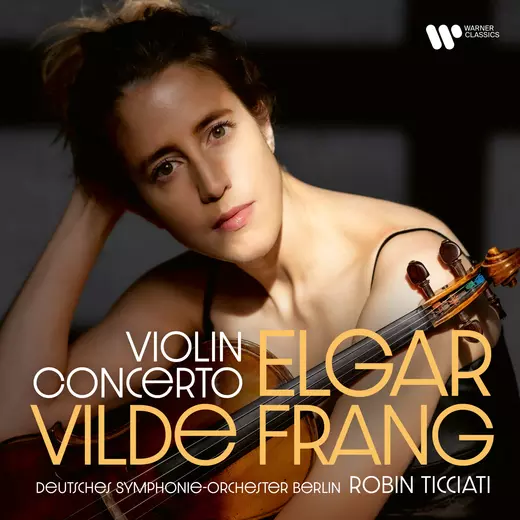
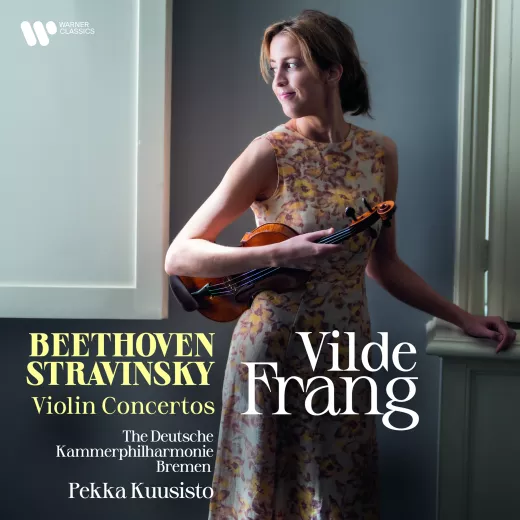

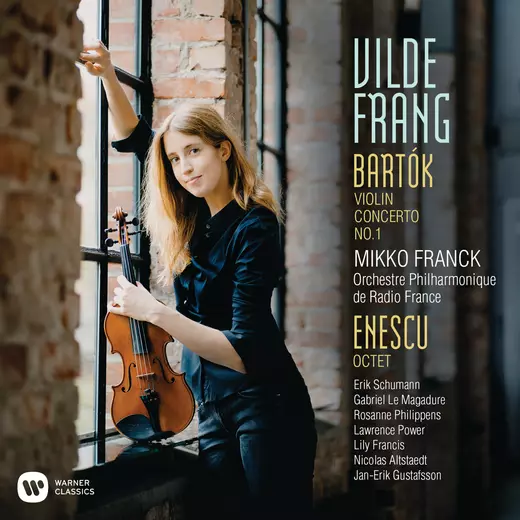
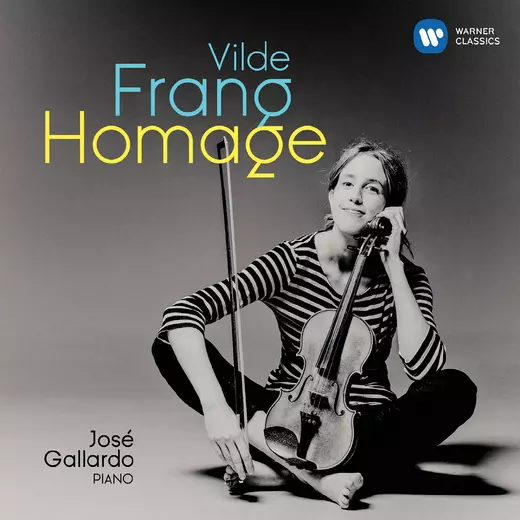
Upcoming Concerts
Thursday
Friday
Thursday
Tuesday
Wednesday
